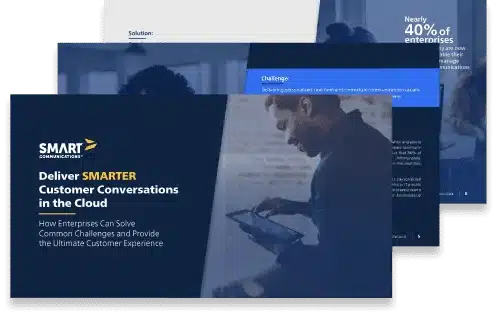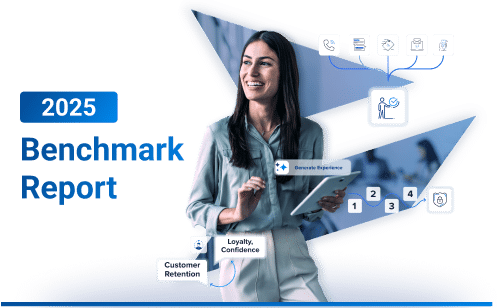Digitizing the RLS Application Process: How UK Banks Can Transform and Win New Business
By: Karen Oakland, VP of Industry Marketing, Financial Services at Smart Communications
For banks in the UK, the Recovery Loan Scheme (RLS) presents a great opportunity to help business clients stay solvent during difficult times. The challenge? How to make it faster and easier for clients to apply for and gain approval to access these RLS funds within regulatory guidelines– without using traditional paper and face-to-face channels of communications. By implementing a digital Recovery Loan Scheme application strategy, the reward could be signing new clients and expanding existing relationships.
The answer is similar to what we’ve found with many banks in the U.S. It starts with replacing paper and PDF application forms with rules-driven digital interviews, which enable borrowers to engage over mobile, as well as desktop channels, upload supporting documents easily and automate complex calculations to reduce errors.
Creating Unforgettable Customer Experiences Through a Digital RLS Application Strategy and Maximize Opportunity
The British government launched the Recovery Loan Scheme in April 2021 to help businesses across the nation recover from financial struggles due to the pandemic. Businesses can apply for up to £10 million in government-backed loans through a variety of banks and lenders. RLS financing can be taken as a term loan, overdraft, invoice finance or asset finance.
Like the U.S. Paycheck Protection Program (PPP), the Recovery Loan Scheme has been incredibly popular, and it’s not difficult to understand why. Many businesses that were financially sound before the pandemic found themselves at the mercy of converging market forces that hit specific industries, like retail, hospitality and travel in unique and punishing ways.
However, like in the U.S., banks and lenders were left to figure out – in a hurry – how to manage the influx of applications and complex eligibility rules. This has resulted in a patchwork of processes that can vary wildly from lender to lender, leaving business owners in a state of confusion as to how they can take advantage of the RLS.
Commercial banking success depends on the ability to lend money quickly and make it easy for busy business banking customers to get the funds they need. While it sounds simple, this is easier said than done. To scale, lenders need to do three things well: digitize, simplify and automate as much of the RLS customer experience as possible.
Common Recovery Loan Scheme Friction Points Impacting the Customer Experience
A few common roadblocks make achieving that trifecta of customer bliss a challenge:
- The need to complete, print and sign forms and physical documents create a burden on borrowers who may not be able to visit a branch
- Borrowers are often confused about what sections of a form they need to complete, but using dynamic rules to guide them helps reduce abandonment rates
- Handwritten forms require manual processing and often have errors that need resolution, slowing down the turnaround time
- Forcing borrowers to speak to a loan officer on the phone to complete an application creates frustrations and time delays and puts lenders at a competitive disadvantage to those who offer easy digital application experiences
- Basic digital forms that don’t allow a borrower to save progress mid-completion or allow switching between devices can further frustrate applicants
PPP Lessons for UK Banks: Winning Customers for Life
UK banks and lenders looking to differentiate themselves in the crowded RLS marketplace would be wise to apply some of the key lessons learned from the U.S. PPP. Smart Communications helped a number of banks accelerate their PPP Loan Forgiveness process with SmartIQTM, a low-code, drag-and-drop platform for forms transformation designed with speed and scale in mind.
Here’s an example of one lender’s situation before and after implementing SmartIQ:
Before:
- When the PPP was introduced, the bank was inundated with requests, which was complicated by the inability to meet customers in person due to COVID-19
- They had more than 650 loans to process, which would have taken half a dozen dedicated resources weeks to get through
- The bank’s 11-page application was challenging for customers to navigate, causing further delays and support requests
After:
- Entire loans can now be processed in a day or less
- They attracted new customers away from banks who were too slow to meet the needs of PPP borrowers desperate for quick funds
- Empowered applicants easily completed their forms with a guided digital interview experience that worked well across devices, resulting in increased customer loyalty (and public praise on social media)
Optimizing the Digital Recovery Loan Scheme Application Process
For time-sensitive market opportunities like the Recovery Loan Scheme, banks need to be agile and ready to deploy new forms in a hurry. Digitizing, simplifying and automating is more than just smart business, it’s an economy-saving effort. Enabling business owners to quickly and easily complete the Recovery Loan Scheme application could mean the difference between staff being made or redundant or meeting payroll. UK banks have a tremendous opportunity to build lasting relationships with customers by supporting them in these difficult times. With SMART technology in place, it’s never been easier.
Watch a short video demo of the SBA Paycheck Protection Loan Forgiveness Solution here.



